Toyota was the first to bring a plug-in hybrid vehicle to the market with the original Prius Plug-in. Now it has moved the technology forward in a second generation model which can cover double the distance – more than 30 miles – and achieve much higher speeds in all-electric, emissions-free driving.
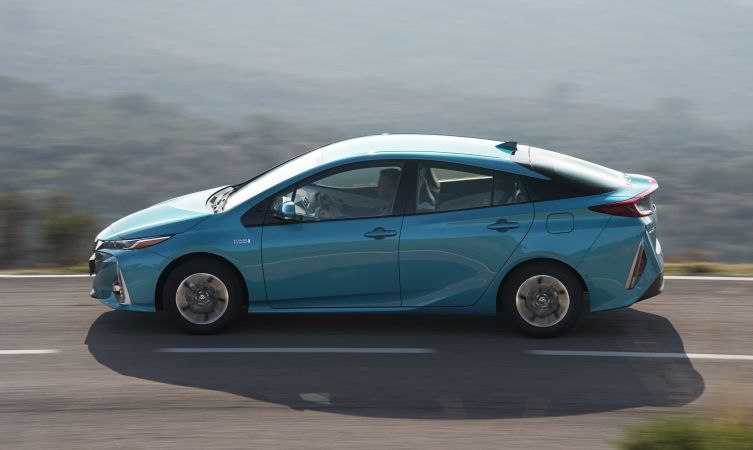
New Prius Plug-in is built on the same Toyota New Global Architecture (TNGA) platform as the standard, full hybrid Prius. Combined with specifically tuned suspension, this delivers much-improved handling dynamics and a more enjoyable and rewarding drive.
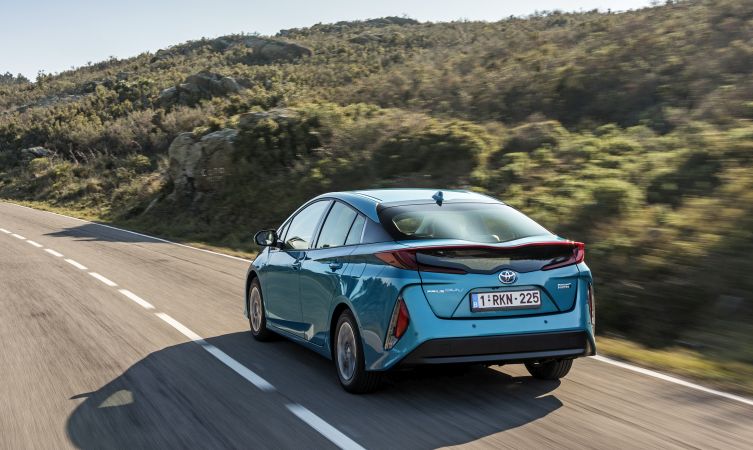
Prius Plug-in also benefits from a number of new technologies that increase efficiency, performance and practicality, significantly enhancing the model’s all-round appeal. Its technological breakthroughs include a Dual Motor EV drive system and a Battery Warming system, plus two world firsts: an EV range-extending solar roof and gas-injection heat pump air conditioning.
Dual Motor Drive System
Prius Plug-in is equipped with Toyota’s first hybrid powertrain to feature a Dual Motor Drive System, increasing EV power by around 83 per cent. A highly compact, one-way gear within the transaxle enables the hybrid system generator to act as a second electric motor. This boosts EV driving power, giving better acceleration, more engaging performance and a higher maximum EV speed of 84mph.
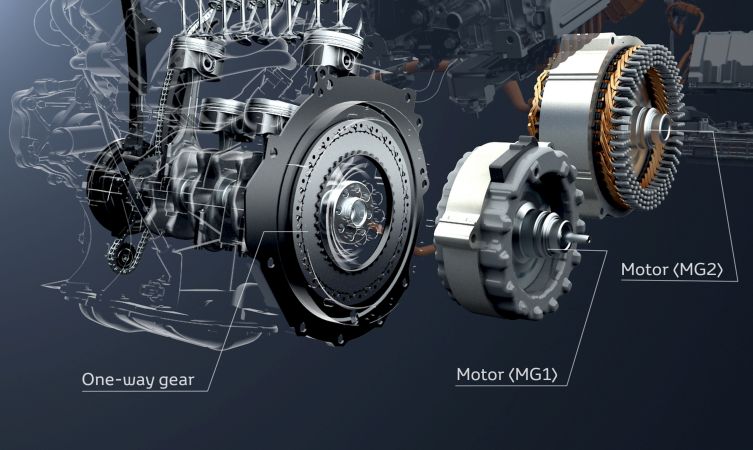
Improved lithium-ion battery
The large-capacity lithium-ion battery, located under the rear load space, is fundamental to new Prius Plug-in’s increased EV driving range. Its capacity has been doubled from 4.4 to 8.8kW/h, yet its volume has only increased by two thirds – from 87 to 145 litres.
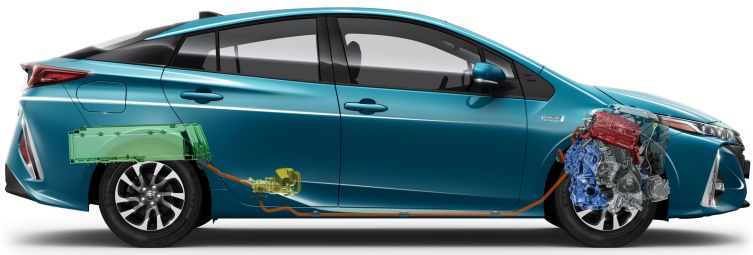
During charging, a new battery warming system will bring the cells up to an efficient working temperature, even when external temperatures drop as low as -20°C. This ensures battery power and efficiency are maintained at a sufficient level to minimise the impact of cold weather on the EV driving range, with full power available from start-off.
Faster battery charging
The increase in maximum power from 2.0 to 3.3kW means the battery can be fully charged up to 65 per cent more quickly – in two hours when using the Type II Mode III Mennekes connector, or three hours 10 minutes using a standard household plug socket.
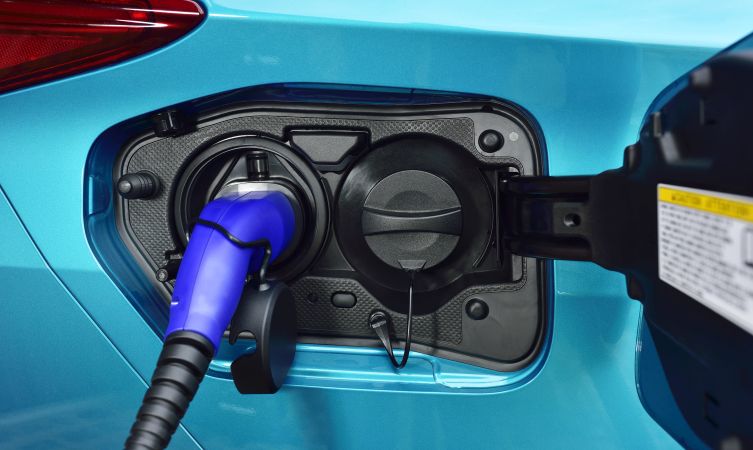
Gas-injection heat pump air conditioning
A new gas-injection heat pump powers the air conditioning, a world-first technology that contributes to Prius Plug-in’s greater efficiency. It can heat the cabin without starting the engine, even when outside temperatures are at -10°C, minimising the impact on fuel consumption and EV driving range.
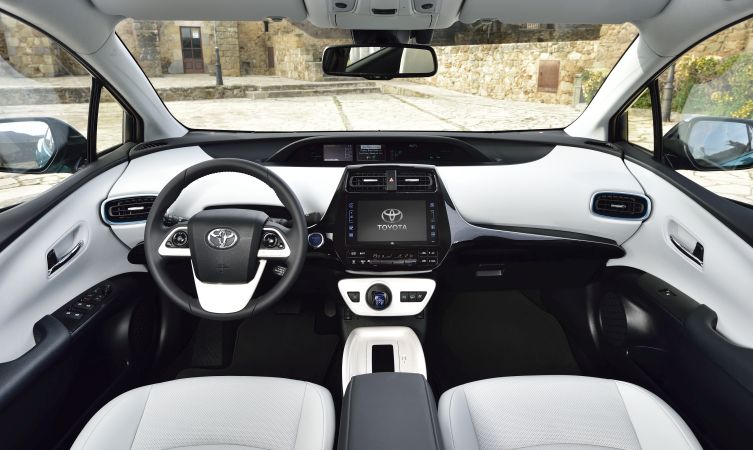
World-first EV range-extending solar panel roof
Developing a technology first seen on the Toyota Auris HSD concept in 2010, the roof can be fitted with a large solar panel to generate electricity to charge the hybrid battery. When the vehicle is parked but not plugged in to a charging socket, the solar roof charges an intermediate solar battery. When this is fully charged, it will deliver a pumping charge to the main hybrid battery.
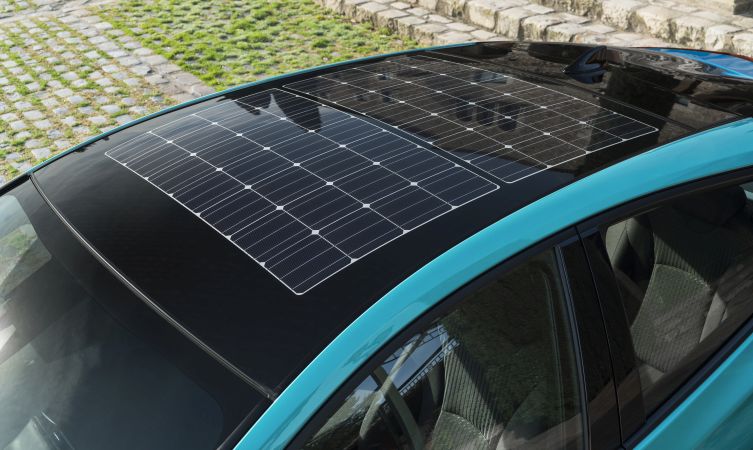
Stand-alone styling
Prius Plug-in’s striking, highly aerodynamic design builds on the classic Prius profile with dedicated styling elements that evoke the car’s advanced technologies. The daytime running lights and LED turn indicators are set vertically at the extreme edge of the front wings, while in profile Prius Plug-in is distinguished by its longer rear overhang, lower cowl and rear spoiler heights and model-specific, two-tone 15-inch alloy wheels, designed to provide extra brake cooling.
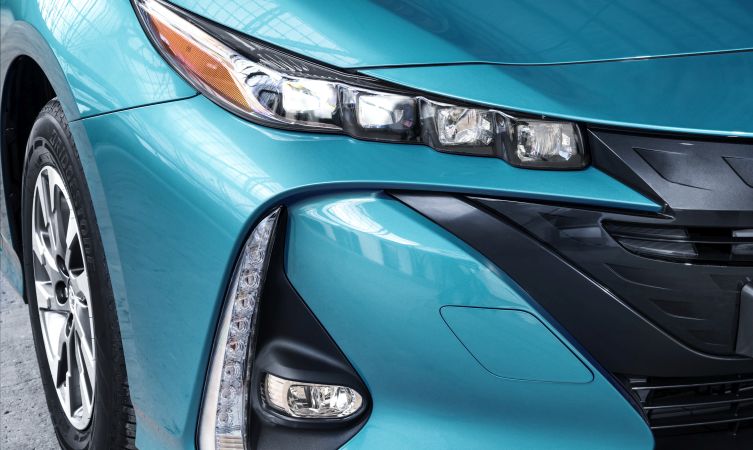
At the rear the cross-sectional shape of the “double-bubble” rear screen is carried into the curve of the rear spoiler. LED rear light clusters are integrated in the extremities of the spoiler and are another feature unique to Prius Plug-in.
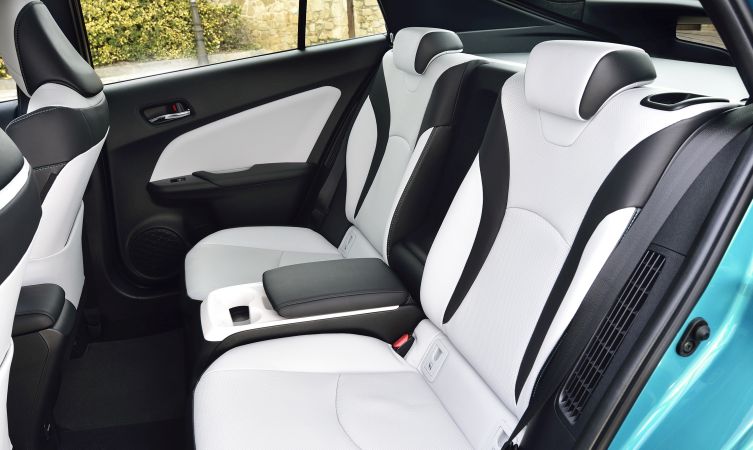
In the cabin a revised layout provides two rear seats separated by a console unit, maximising space and comfort for passengers. The front seat design and clean, structural arrangement of the dashboard are shared with the standard Prius. The instrumentation includes a large, eight-inch infotainment screen with updated graphics and dual 4.2-inch TFT screens with PHV-specific displays.
Prius Plug-in: UK model range
The new Prius Plug-in is available in the UK in two specifications – Business Edition Plus and Excel.
Toyota Safety Sense will be standard on both versions, including the Pre-Collision System with pedestrian detection, Lane Departure Alert with steering control, Adaptive Cruise Control and Road Sign Assist. Additional safety features include a Blind Spot Monitor and Rear Cross Traffic Alert. Comfort and convenience items include dual-zone automatic air conditioning, rear passenger footwell heating and Smart Entry and Start.
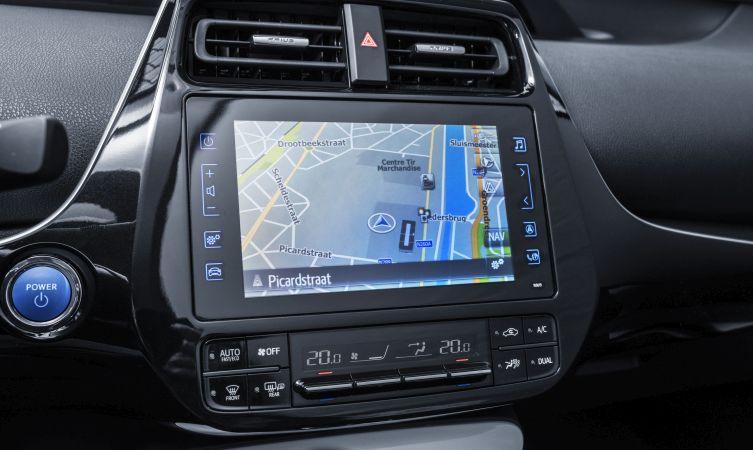
The Business Edition Plus specification includes the Toyota Touch 2 with Go touchscreen multimedia and navigation system, heated and auto-dimming door mirrors with an automatic retracting function, rear view camera, dusk-sensing LED headlights, colour head-up display, Bluetooth, six-speaker audio with DAB reception and heated front seats. The solar roof system can be specified as an option for the Business Edition Plus model.
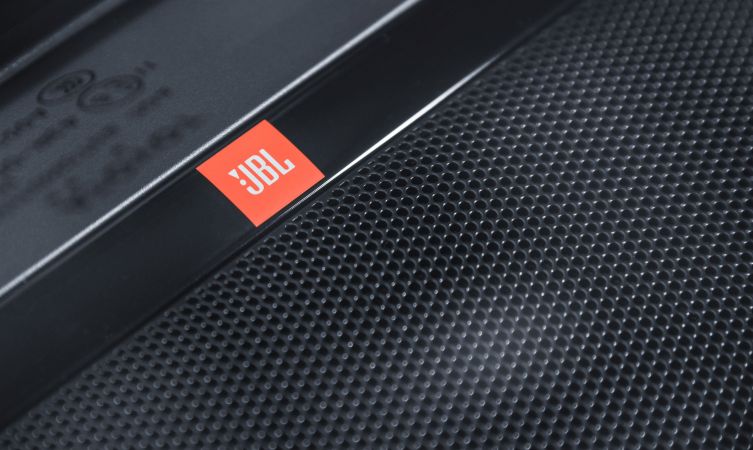
Excel models extend the specification with rain-sensing wipers, Simple Intelligent Park Assist and front and rear parking sensors, a 10-speaker JBL premium audio system, voice recognition control for the Toyota Touch 2 multimedia and navigation system and leather upholstery.
Pricing and warranty
The new Prius Plug-in is on sale now, with the first customer deliveries scheduled from 1 March. On-the-road prices start at £34,895 for the Business Edition Plus model (£36,395 with the solar roof option) and rise to £37,095 for the Excel. Customers buying a new Prius Plug-in can take advantage of the UK Government’s plug-in car grant, which provides £2,500 towards the vehicle purchase cost.
In common with all new Toyota vehicles, Prius Plug-in is protected by a five-year/100,000-mile warranty.
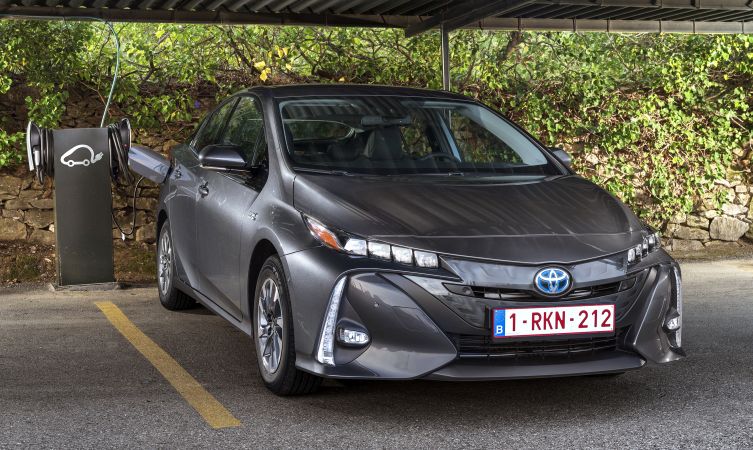
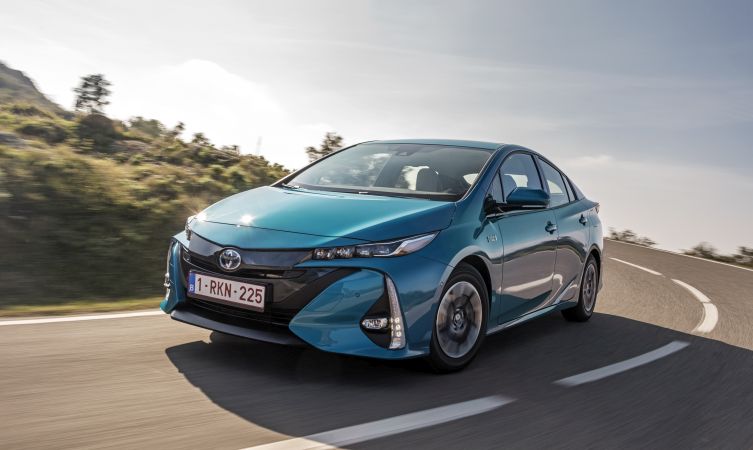
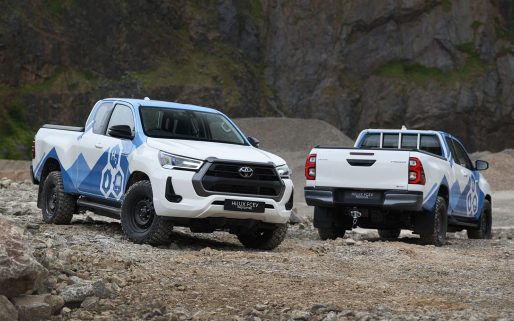
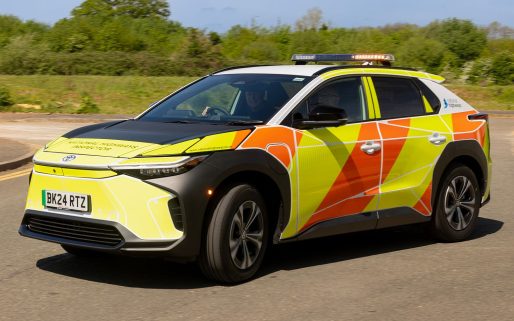
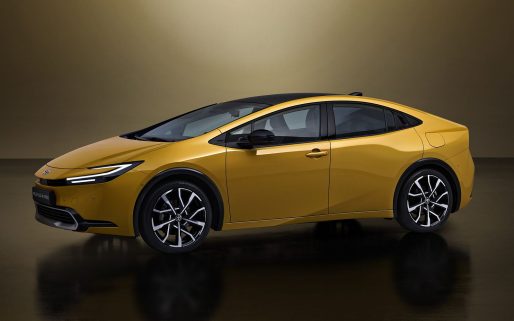
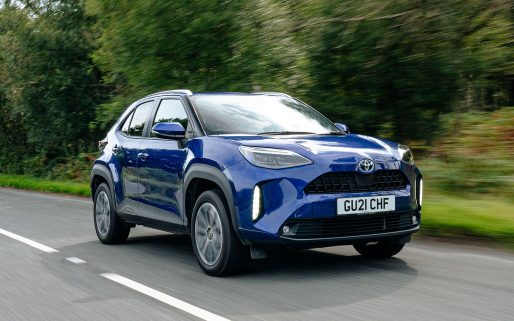
Doubles the distance “More than 30 miles” quote
I would hope it would travel further that that for £37000
Give or take the odd U2 included
KD
Why? It’s a Plug In Hybrid, not an EV.
And it’s not £37k, once you take into account the £2.5k grant. The entry level model then becomes less than £32.5k.
Why has it got cupholders in place of the central back seat – will not be replacing our 2014 Prius Plug-in with a car that doesn’t have 5 seats as I often carry 4 passengers…
Hi Neil,
Thank you for your comment. The reason why we’ve replaced the 5th seat is due to weight management. We didn’t want to change the suspension set up for increased weight (caused by the larger battery), since we wanted to prioritize efficiency, comfort and handling. Many thanks.
Sounds like you should have produced a more sophisticated rear suspension – surely you must use auto leveling suspension in done of your other models.
Very disappointing that this Prius, unlike previous versions isn’t a 5 seater. As I say, as such it cannot replace our current Prius Plug-in (or indeed our previous Prius that out son now has…).
Did you actually consult existing customers before you designed it to find out what they need?
Hi Neil,
All our products are extensively tested and researched prior to bringing them to market. We’re however, sorry to hear that this change to the Prius Plug-in will mean you will not be purchasing another one in the future. We will pass on your feedback to our product team. Many thanks.
I totally agree with Neil there is just no call for a 3 passenger car i will also be avoiding this edition of the
Prius. such a shame looked so promising had my wallet in hand to buy one if it had not been for this very large
mistake. ohh well
I observe that Toyota UK has stated that the UK will not be getting the fifth generation prius, yet it will be sold in other European countries. Instead Britons are told that we have a greater appetite for SUV-type cars.
If Toyota make SUV-type vehicles available instead of hatchback type vehicles then people cannot buy hatchback type vehicles.
I see a serious problem here. SUV type vehicles use more fuel. Making SUV type vehicles available and removing the choice to buy hatchback type vehicles is hardly conducive to cutting emmisions and protecting the environment.
Before anyone draws attention to electic vehicles, hybrid vehicles or plug-in hybrid vehicles using less fuel than combustion-engine-only vehicles I would like to point out that the reasons for a combustion engined SUV using more fuel than a hatchback type vehicle will also cause an electric SUV, a hybrid SUV, or a plug-in hybrid SUV to used more ENERGY than a hatchback using an equivalent powerplant/drivetrain. This energy has to come from somewhere, so a hatchback remains more efficient than its SUV counterpart with a similar type of powerplant/drivetrain.
Further to this, there are a number of things in the fifth generation prius that are somewhat dissapointing.
From the images I have seen it looks as though the lower rear windscreen of generations two to four has gone.
The rear number plate has moved to (vertically) below the bumper cover. As the vehicle travels along, air flowing past the vehicle picks up dirt from the road. A number plate close to the road is more exposed to this dirt as the air becomes turbulent behind the vehicle. Furthermore the number plate (vertically) below the bumper cover may be obscured by a hitch ball/tow ball, particularly if a bumper protector plate is used. This would not be the case if the number plate were mounted on the tailgate, as it has been in previous generations. Added to all this, a number plate mounted on the tailgate just looks better in my opinion.
The extra height of bumper cover required to place the number plate (vertically) below the bumper cover has meant that overall height of the tailgate has reduced. This makes it less practical. It is less practical to lift loads into the boot of the car; it is less practical as a shelter from the weather as the boot is being loaded.
The rear door handles being mounted on the pillars of the doors are a bit silly. The car is a five door vehicle. So what? It’s nothing to be ashamed of. Get over it. Why try to hide it by trying to hide the rear door handles?
Behind the rear doors there is a black triangular feature. It doesn’t look like a window. This seems to be a missed opportunity to include quarter lights behind the rear doors like on the second and third generation. Quarter lights make the interior feel airy.
Moving onto the interior, the dash is terrible compared to previous generations. Again, comparing it to previous generations of the prius, the instrument panels look as they’ve been plonked on as an afterthought. The centre screen sticking up out of the dashboard rather than it being integrated into the dash as it has been in previous generations, looks bad enough, but the fact that it is an asymmetrical trapezium makes it look absolutely terrible! Compared to previous generations the instrument cluster in front of the steering wheel just looks like a mess. I wonder what might have been going through the minds of the designers: –
“Where shall we put this instrument cluster panel?”
“Don’t know; just plonk it somewhere where there’s a space.”
If you look at the dash in previous generations, particularly in the second generation prius, the instruments fit neatly into the dash/fascia. They look as if they were designed to go specifically into that dashboard and the dashboard/fascia was built specifically for that instrument display. The fact they were never never obscured by the steering wheel also made it really practical and added to ease of driving the car. Combined with the symmetry of the dashboard means it’s not just practical, but aesthetically pleasing. The uncluttered dashboard/fascia (of the second generation in particular) makes the inside of the car look and feel spacious. The infotainment screen in the second generation not only looked neatly and tidily integrated into the dashboard, but the fact that it was high up made it practical, because it meant the driver’s vision didn’t have move so far from the road to glance at the screen. Unlike the fifth generation prius, the infotainment screen of previous generations looks as if it is solidly integrated into the dash/fascia, not added on as an afterthought. The gearshift that got illuminated green (on the second generation prius) when the lights were on was another practical feature. The double glovebox in the second and third generation was yet another practical and utterly brilliant feature.
The highest spec model of the fifth generation prius only seems to be available with a 2.0 litre engine (according to draft U.S. specifications anyway). The claim is that the rest of the car is so efficient that even with the larger engine, the 2.0 litre model is as efficient as previous generations with a smaller engine. I think that might be missing the point though. With the other efficiencies of the fifth generation prius, would the 1.8 litre model not be even more efficient than previous generations of the prius?
It also seems as though the car has nineteen inch wheels. This seems very large. According to information on the internet, larger wheels and tires are more efficient for cruising on the motorways at higher speeds and quite possibly more efficient for dual carriageways, but less efficient when starting to get the car moving. This then would mean that for stop-start driving in town, and possibly for country roads, the large wheels could make the car use more fuel/energy.
On the plus side the overall silhouette of the car is quite nice. It does look a bit like the back of the car has been sliced vertically off though. I very much like that there is the option of a solar roof (at least according to draft U.S. specifications and on the toyota.de website [Germany]). It’s a great pity though that the fifth generation didn’t go at all in the direction of the concept that saw not only the roof, but the upper rear windscreen, the rear spoiler and the bonnet covered in solar panels. Sadly it also seems that for the fifth generation prius the solar roof might only available on the very top model, for which a 1.8 litre engine is NOT available (according to draft U.S. specifications).
I think the best new feature of the fifth generation prius is replacing leather seats with vegan leather (at least on the toyota.de website). What is not stated is whether vegan leather is available if the steering wheel is leather or if seats with partial leather feature vegan leather. It really is about time that the motor industry ends this nonsensical obsession of upholstering cars with murdered animals, and adding insult to injury (and murder for that matter), making such upholstery compulsory on the higher spec models.
Someone on the internet has made a point that the lines on the fifth generation prius are simpler and less fussy than previous generations, particularly compared to the fourth generation prius. This makes the car look uncluttered and improves the look of the car. I do agree with this point and I like “Prius” boldly written across the tailgate and under the infotainment display, but I still prefer the features from the previous generations that I have mentioned above (and below).
Contrasting with the clean simple lines of the exterior of the fifth generation prius, the dash of the fifth generation looks cluttered and fussy. The dash of the second and third generation looks tidier.
As for the red accents to the dash of the fifth generation, I can only hope they are lit by LEDs that the driver can select the colour of. I have seen other pictures of the interior of the fifth generation prius with blue accents instead of red accents. The red accents really are not a nice colour.
I would include illustrations to draw attention to what I mean but there seems to be no facility to do so.
I’m sorry to be so negative, but if we don’t tell you these things you will not know.
Hi Alex, thanks for taking the time to leave this feedback.
We value what our customers think and will pass this on to our Product Team.
Since the introduction of the Prius, our first hybrid model back in 2000, over the years we have launched a much greater selection of self-charging hybrids, covering all the main segments of the market meeting a much wider customer base.
Acknowledging its popularity in the private hire market, we are still able to cater for operators who continue to require our reliable hybrid technology, with the UK built Corolla Touring Sports estate.
Thanks.
Thank you very much for your reply.
The Corolla is not a plug-in hybrid.
I’m sorry that my last comments were so negative, but I really felt that Toyota should be aware of them.
If indeed you have read all the comments that I made, thank you for taking the time to do so; I realise they are quite a marathon.